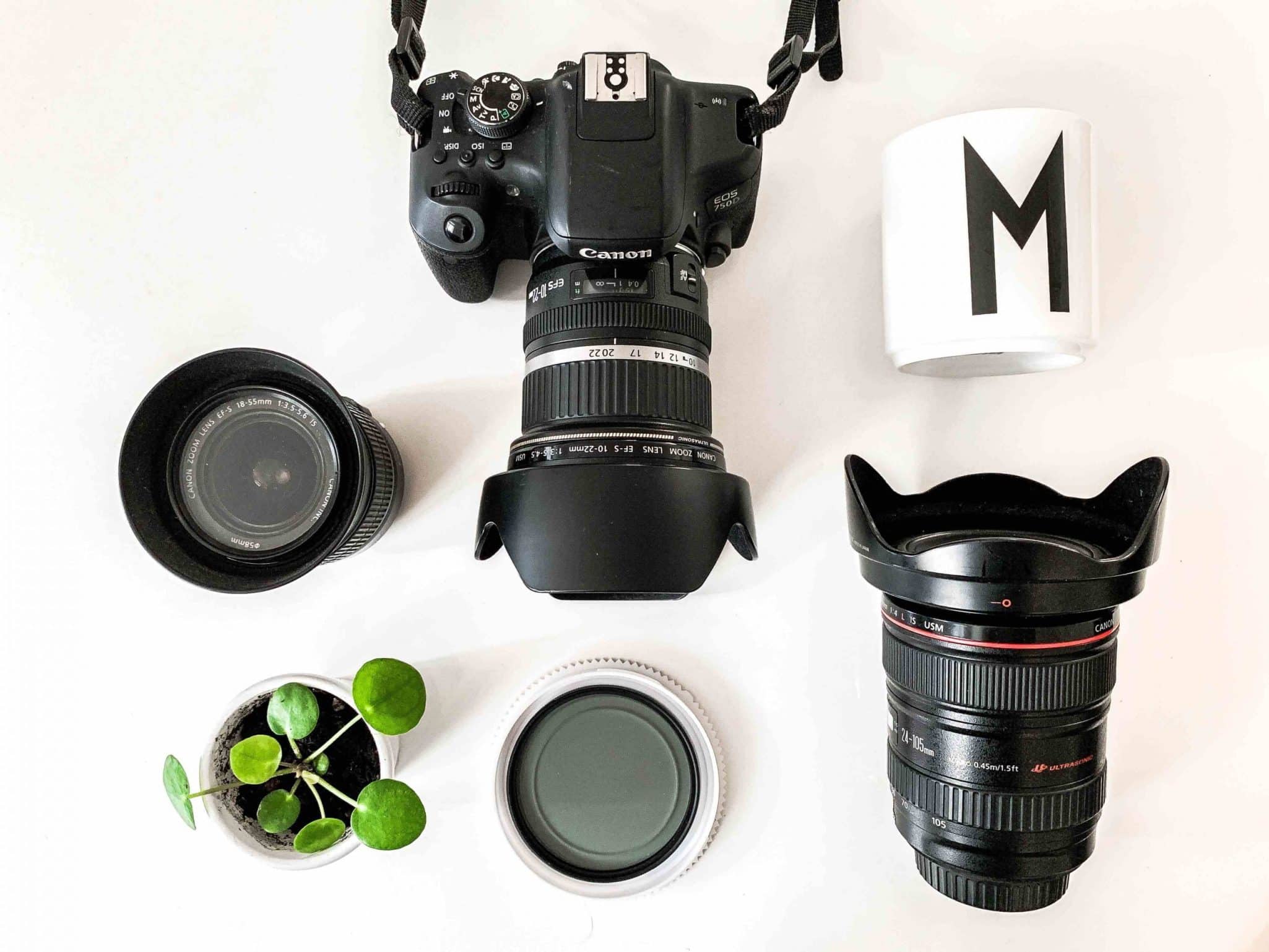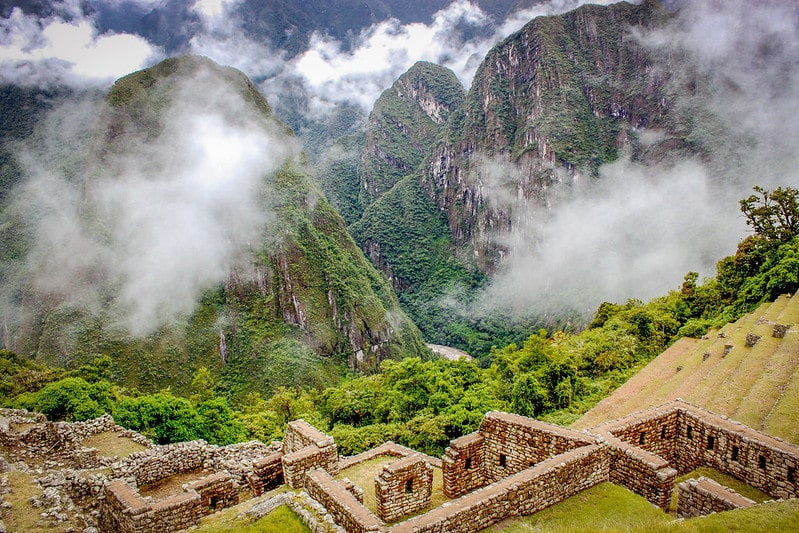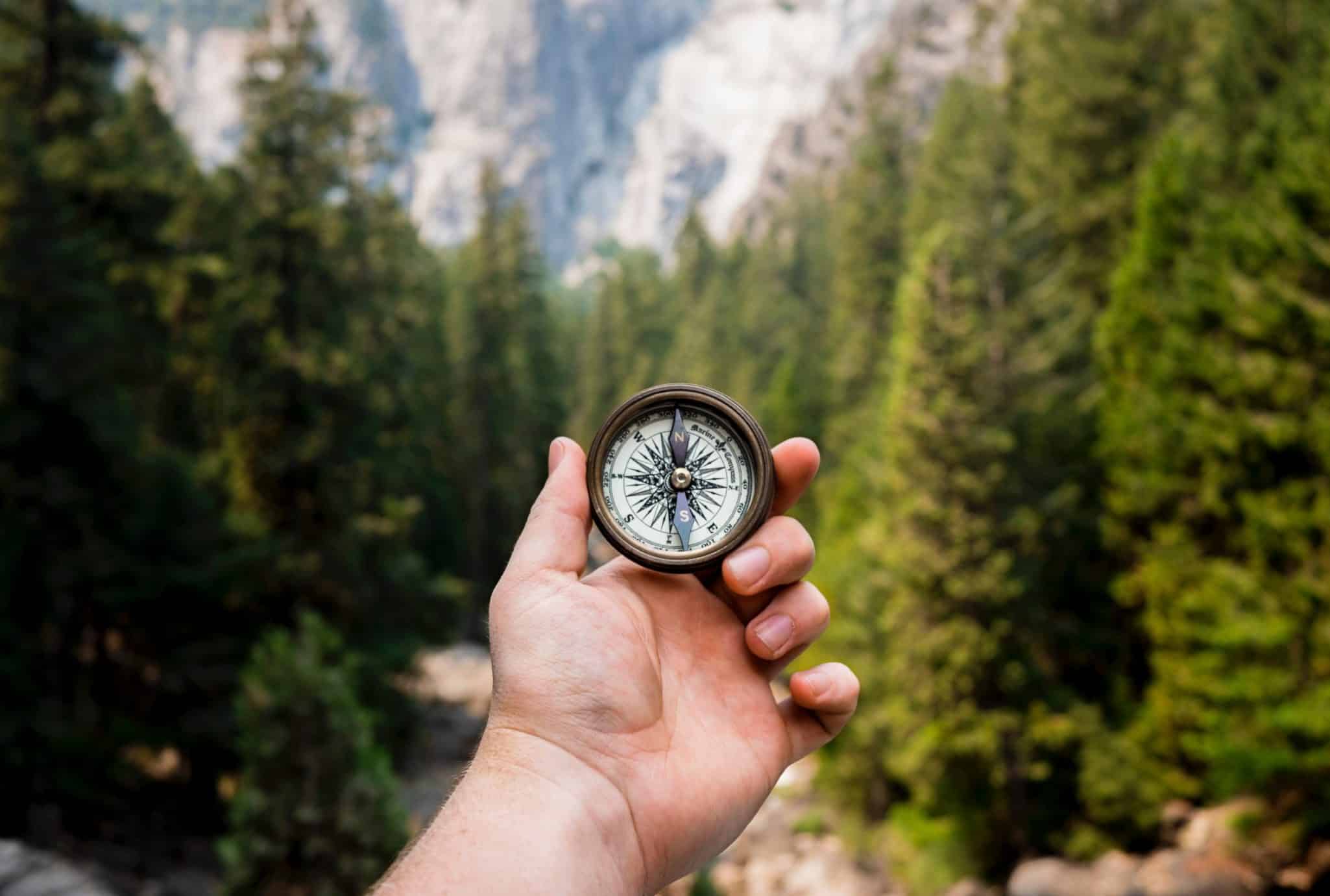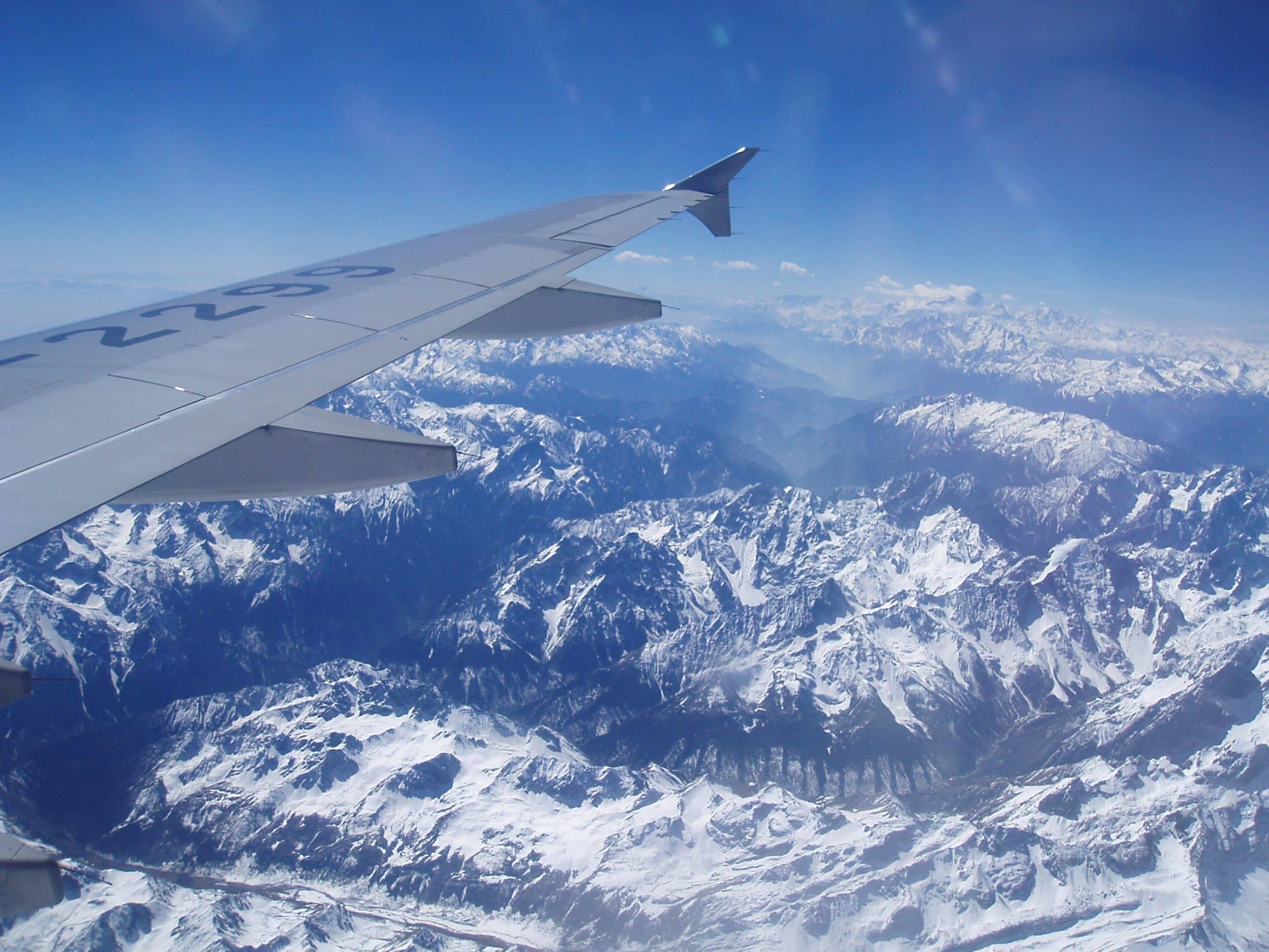The Best Mirrorless Camera for Travel
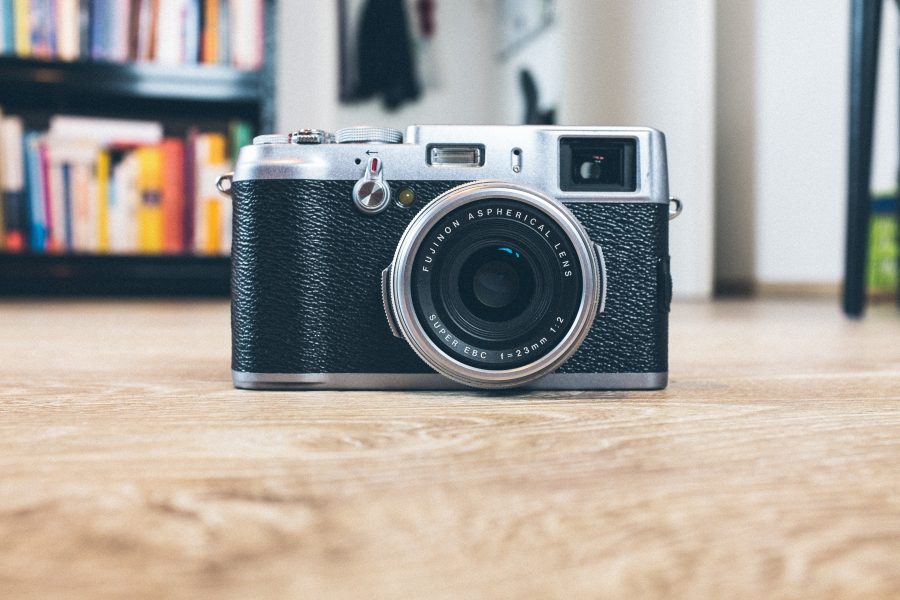
When planning a trip, a camera will very likely be at the top of your packing list.
And most of us who want to make the best memories possible will seek out the best camera for travel. When searching for the best camera, the two types you’re likely to see are DSLR and mirrorless cameras.
The main differences between the two types are size/weight and the use of an LCD display.
Read next: How to take amazing travel photos
This post contains referral links for products I love. Adventurous Miriam earns a small commission at no extra cost to you if you purchase through my links. I appreciate your support ♡ Learn more
What is a mirrorless camera?
Mirrorless cameras are usually smaller and lighter than DSLRs, due to their lack of a mirror mechanism.
And because light entering the camera doesn’t have to reflect off a mirror, this means you can use the camera’s LCD display to take the photo, rather than looking through a viewfinder.
For this reason, mirrorless cameras are often the go-to camera for travelers. This is due to their smaller size and weight, and their slightly easier usability, with an LCD display making them more similar in operation to a smartphone.
Let’s look into the features of the best mirrorless camera for travel that best suits your needs and budget.
Read next: The best camera for travel photography
Best mirrorless camera for travel
| Camera | Type | WiFi | Price |
|---|---|---|---|
| Fujifilm X-T100 | My Favorite | Yes | Check price |
| Canon EOS M100 | Best Lightweight Camera | Yes | Check Price |
| Canon EOS M50 | Best Midrange Camera | Yes | Check Price |
| YI M1 | Best Budget Camera | Yes | Check Price |
| Sony Alpha a6000 | Best Value-for-money Camera | Yes | Check Price |
Things to consider before buying a mirrorless camera
Mirrorless cameras are largely of the same quality as DSLRs, with the advantage of being smaller and lighter, thus more compact for travel.
However, mirrorless cameras are often a tad more expensive than DSLRs, due to them having these cool advantages. So, when choosing the best mirrorless camera for travel, what should you consider?
- Price
- Portability
- Battery life
- Ease of use
Price
Consider how much you’re willing to spend. This comes down to myriad factors like: how much money do you have to spend?
What are you using the camera for? How much annual use will you get out of it?
What kind of traveling are you doing with the camera? A good mirrorless camera can set you back anywhere between $500 and $2000, so consider how you’re planning to travel with the camera and spend according to your needs.
Portability
As I’ve mentioned, this is what mirrorless cameras have over DSLRs. And it can certainly tip the scales for those of us who like to travel light, or at least travel as fluidly and with as little needless bulk as possible.
Battery life
This is one disadvantage of mirrorless, being more of a drain on their batteries than DSLRs.
However, this does not mean that they’re impractical (if they were, they wouldn’t sell for $2000). They’re still extremely functional as travel cameras, especially if you are using them for photography and not for filming.
Ease of use
Mirrorless cameras are excellent for those with less experience with cameras. This is due to their unique ability to use an LCD display, therefore not forcing you to rely on a viewfinder.
This makes them quicker to use, taking less faff and preparation for the perfect shot.
Ease of use like this is key when traveling, especially if you’re in a moving vehicle or engaging in some wildlife photography. A mirrorless camera is the best choice as a nature photography camera every time.
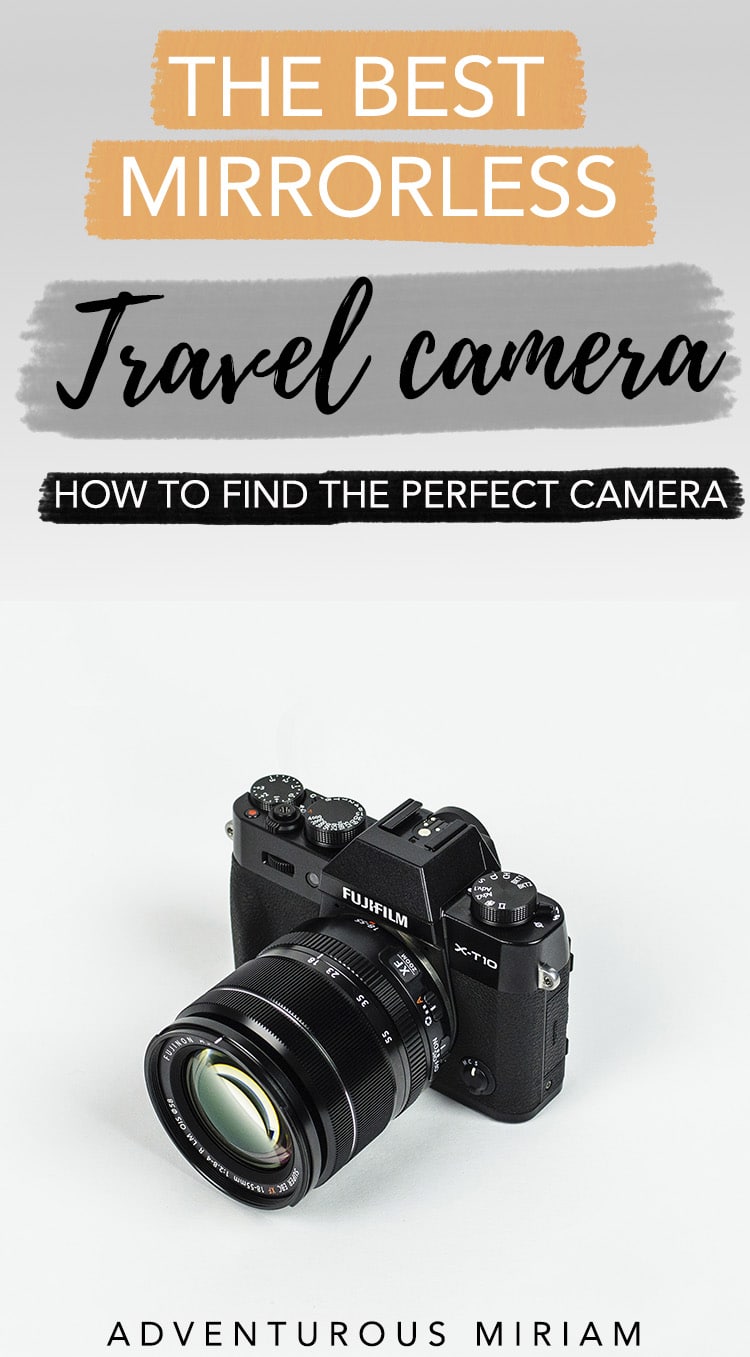
My top pick
Going by brand, my top pick for mirrorless cameras is Fujifilm.
When it comes to DSLR, the market is very much dominated by Canon and Nikon, with lovers of both arguing back and forth like sports fans. In the world of mirrorless, however, Fujifilm is king, and for a number of reasons.
Broadest price range
Fujifilm mirrorless cameras offer the broadest price range, without quality being compromised.
Renowned for their quality builds, they offer cameras at the low end of the price range – at $500 for a Fujifilm X-A5 – as well as the higher end of the price range, such as the Fujifilm X-T2 which costs around $1500.
Quality builds
Beyond price range, Fujifilm also has some amazing hardware advantages that are really worth celebrating, namely what they make their cameras out of.
In order to keep their cameras as lightweight as possible, brands like Canon and Nikon rely heavily on plastic casing for both their camera bodies and their lenses.
Fujifilm, on the other hand, prides itself on its quality builds, even at the lowest end of the price range.
Their cameras are made from quality metal, with leather grips which provide the most beautiful looking cameras money can buy. The lenses, as well, are metal, and immediately encourage your confidence in their quality of craftsmanship.
Water-resistant
To mention the quality of the build a little more, Fujifilm cameras are also largely weather resistant, a surprisingly rare quality amongst both mirrorless and DSLR cameras.
Color quality (the best feature)
The best thing about Fujifilm is its color quality, which they are renowned for the world over.
Fujifilm knows how to make their colors pop, meaning that they are perfectly suited for all types of travel photography – from street shots to safari.
They are the best choice as a wildlife photography camera for this reason, provided you choose the right lens to accompany your camera.
Walking the streets of New York, Paris, or Tokyo at night, you want a Fujifilm mirrorless camera to bring out the subtle colors of the neon and the streetlights.
Fujifilm X-T100
My top pick for a specific camera is the Fujifilm X-T100, a midrange camera that’s incredibly lightweight and has a gorgeous chrome and leather aesthetic.
It boasts super-fast autofocus for those quick shots, and the LCD display tilts and opens up.
The durability, ease of use, and mechanism at hand make this my absolute top pick as the best mirrorless camera for travel.
The best lightweight mirrorless camera
Canon EOS M100
Key Features
- Body design
- Controls and handling
- Image sensor and processing
- Autofocus
- Continuous shooting
- Creative Assist
- LCD monitor
- Built-in flash
Canon EOS M100
In 2019 the most lightweight mirrorless camera is also one of the best value for money: the Canon EOS M100, coming in at $450.
As I’ve said, mirrorless cameras are the best for ease of travel and ease of use.
When you’re wandering a new city, climbing a mountain to its summit, or out on safari, you don’t want a hulking great camera dangling around your neck or weighing down your backpack.
When looking to find the most lightweight mirrorless camera for your travels, the Canon EOS M100 is the best around, with a weight of just 302g (10.7oz), and that’s including the batteries.
The Canon EOS M100 hits that perfect size sweet spot of being not so big as to be cumbersome or awkward. And not so small as to feel cheap or not up-to-specification.
Sharpness
The quality of photos delivered by the Canon EOS M100 is also not compromised at all in Canon’s quest to remove bulk and shave down on size. The sharpness of the photos is extraordinary.
And the size of the camera means it’s quick and easy to take high-quality photos in moments.
With something of this quality and size, you’re more likely to get that lucky photo of a passing can or a grazing animal in motion than you are with most other mirrorless cameras.
With this in mind, this camera is more than just the best lightweight mirrorless camera on the market right now. It’s also one of the best Canon travel cameras around in 2019.
Creative Assist mode
The Canon EOS M100 also features a Creative Assist mode, walking new users through the ins and outs of its functions.
This eliminates the fear that every photography newbie has of missing out on the best features of their camera. Or missing the best photo opportunities, because they don’t know how best to operate their own camera.
This mode guarantees you’ll be a master of your camera before you even take it on your travels, thus making it the best mirrorless camera for beginners.
Value for money
As mentioned before, this camera is fantastic value for money, too.
It’s almost at the very bottom of the price range for quality mirrorless cameras, yet still developed by a recognized brand you can trust. You know if you buy Canon, you’re buying quality every time.
And at this price and this size and weight, the Canon EOS M100 is incredible value for money.
The best midrange mirrorless camera
Canon EOS M50
Key Features
- 24MP APS-C CMOS sensor
- Improved Dual Pixel CMOS AF and Eye Detection AF
- 24p UHD 4K and 120p HD for slow motion
- Vari-angle Touchscreen LCD
- Automatic image transfer to compatible devices while shooting
- Silent Mode for Quiet Operation.
- Wi-Fi and NFC with Bluetooth
- 235 shot-per-charge battery live (per CIPA)
Although it has a frustratingly similar name to the best lightweight mirrorless camera mentioned above, the Canon EOS M50 mirrorless camera is a very different beast.
It’s a little bigger, and little bulkier, heavier, and has some of the best technical specifications of a mirrorless camera on the market right now.
This includes the ability to film in 4K – which is astonishing when you consider its midrange price of around $700.
4K Ultra High Definition (UHD)
It should be a given that, the higher you go up the price range, the more features you’ll get for your money.
And so, if you can stretch to a midrange $700 camera like the Canon EOS M50, you’ll be treated to some incredible features.
The best and most impressive feature of this camera is its ability to capture a staggering 4K UHD film footage.
This is what immediately makes it the best camera for blogging on this list. If you’re a blogger or a vlogger who can stretch to a midrange camera, this is a fantastic choice.
Autofocus
With a built-in autofocus viewfinder, the Canon EOS M50 can keep a clear and vivid focus on your face as you vlog at all times.
That feature eliminates so much of the hassle of fiddling with settings to get the optimal focus in any given situation – indoor or outdoor, daytime or night-time.
It also eliminates the worry of having to edit your videos in post to get the focus just right. The camera does it for you.
The autofocus (or AF) tracking is also amazing for filming high-motion video, such as animals grazing, cars in motion, and birds in flight.
The AF will automatically follow and track what you set your sights on, keeping a crisp image constantly in focus. It’s incredible.
Fold-out screen
The screen also folds out and flips around so that you can capture selfie footage easily, all the while keeping a clear image of yourself in your eyeline, knowing at all times what you look like and how the footage will turn out. I love this feature.
Lightweight and small
All of this is also provided on a lightweight and slender mirrorless camera. For quality vlogging like this, even Canon usually only offers relatively heavyweight cameras.
Filming yourself with one hand during a walk or a hike can put a surprising amount of strain on your muscles. That’s very much not the case with the Canon EOS M50.
Weighing in at a ridiculously lightweight 387g (13.6oz), you can easily manage to keep this camera held without any exhaustion caused on your end.
There really are no downsides to this camera, as biased as that might sound. It delivers the highest quality photos and videos available on the market right now, with an absurdly lightweight and small size, and at a reasonable midrange price. I can’t recommend it highly enough.
The best budget mirrorless camera
Key Features
- 20MP Four Thirds sensor
- 3″ 1.04M-dot touchscreen LCD
- 81-point Contrast Detect AF system
- Touch-to-focus and one-touch image capture
- 5 fps continuous shooting
- 4K/30p video recording capability
- Built in Wi-Fi and Bluetooth LE
Mirrorless cameras, even more so than DSLRs, are known for their quality. You typically don’t need to worry about buying a disappointing dud of a camera, even if you need to stick to a budget price range.
The flip side to this is that what constitutes ‘budget’ differs from person to person.
While for some, budget means $500, for others, it might mean $50, and I very much understand that. However, if you are looking to get yourself a mirrorless camera, you’ll be aware that you’ll have to shell out a certain amount of money.
Lightweight
While the brand is a lesser-known one, don’t let that put you off. The YI M1 is still a high-quality camera, and one of the biggest pros that it offers is its weight.
Any traveler is going to look for the lightest quality camera they can find. And since mirrorless cameras are all about being slimmer and lighter, the YI M1 weight of only 350g (12.3oz) is just fantastic.
Quality
With the ability to film in HD at 30fps, as well as take 20MP still images, and with a 3” LCD display, this camera does everything a budget camera should do.
Minimalist design
The designers of the YI M1 were seeking a minimalist design with this camera.
So they eliminated many of the features that many photographers arguably see as a bonus – and can often confuse and overly complicate the use of a simple camera.
By stripping some of the added features, like auto-focus and an adjustable fold-out screen, they have provided a sleek, small, incredibly easily portable camera.
It’s ideal for anyone who wants to be able to leave their house, head out on an adventure, and take incredible high-quality photos and videos that they know will look impeccable, with stunning color and vibrancy.
Of course, it is unfortunate that many of the more advanced features of a midrange camera are missing from the YI M1.
But when seeking a budget mirrorless camera, what you want most is reliability, and to not have to sacrifice quality for a lower price. In that regard, the YI M1 very much delivers.
The best value-for-money mirrorless camera
Sony Alpha a6000
Key Features
- 24.3 MP Exmor APS HD CMOS image sensor
- Full HD movie shooting up to 1080p
- Battery life for up to 420 images
- Tiltable 3″ LCD with 921K dots
- Intelligent Scene Recognition and Face Detection
- Electronic First Curtain shutter
- Up to 11 fps continuous shooting at full 24.3 MP resolution
- WiFi with NFC Capability
This is going to mean different things to different people, depending on their budget.
But I think we can all agree that, when letting go of a few hundred dollars, we want that absolute best value camera – or indeed any piece of tech – that our own personal budget can afford.
The dream for many, even beginner travelers and beginner photographers, is to be able to use the kind of mirrorless camera that a professional would use. That’s why the best value mirrorless camera is certainly the Sony Alpha a6000.
Sony has a reputation – in laptops, TVs, headphones, video games, and cameras – for being the best quality tech manufacturer.
If you can afford a Sony, you can access the best of the best. That also means that their products are often highly-priced; sometimes overpriced (especially their laptops). That is, incredibly, not the case with the Sony Alpha a6000 mirrorless camera.
At approximately $600, the Sony Alpha a6000 offers more record-breaking features than any other mirrorless camera on the market at that price.
Autofocus
As mentioned when discussing the Canon EOS M50, autofocus is incredibly vital to taking the best quality photos and videos possible.
Especially in a high-motion setting – something you’ll always find yourself in when traveling. The Sony Alpha a6000 actually has the fastest autofocus of any camera on the market right now (see what I mean about Sony always being at the forefront of tech?).
And this means that you’ll never get a bad photo with this camera. Even to the point that you’ll start thinking that the key to being a good photographer is simply buying and owning this camera.
High quality
The Sony Alpha a6000 also boasts a 24MP camera, one of the highest pixel counts in its price range.
And for video. it’s able to capture HD footage at 60fps, again investing its focus on motion capture and detail, much like when taking photos. To enhance your ability to take high-quality video footage, the screen tilts to your liking, meaning it’s adaptable to any physical situation.
The only downside here is the inability to flip the screen, meaning this mirrorless camera isn’t the most ideal for vlogging.
Lightweight and aesthetic
There isn’t much the Sony Alpha a6000 can’t do, especially at its price range.
Much like the best Fujifilm cameras, its build also leans heavily on metal and leather for added comfort, durability, sturdiness, and a very cool aesthetic style. It’s also one of the lightest cameras I’ve mentioned, weighing only 344g (12.13oz).
This camera, more than any other is very much an everything-but-the-kitchen-sink camera.
Professionals use it; beginners can easily enjoy it; it won’t break your bank or become obsolete for years and years to come. It’s the best value-for-money mirrorless camera on the market.
How to find the best mirrorless camera for travel
As I mentioned at the beginning, which camera you want – or which camera is suitable for you – is all down to your needs and your budget. These are the things you need to ask yourself before putting down any money:
- What will you use your camera for?
- What is your budget?
- Where will you be taking your camera?
- How many features do you need to have?
- How often will you use your camera?
- What’s most important – weight, size, ease of use, budget, features, durability?
If you consider these questions carefully, they’ll lead you to the ideal mirrorless camera for you and your needs.
Just don’t spend beyond your means, listen to people’s opinions, consider the features you do and don’t need, and you’ll find the right camera for you.
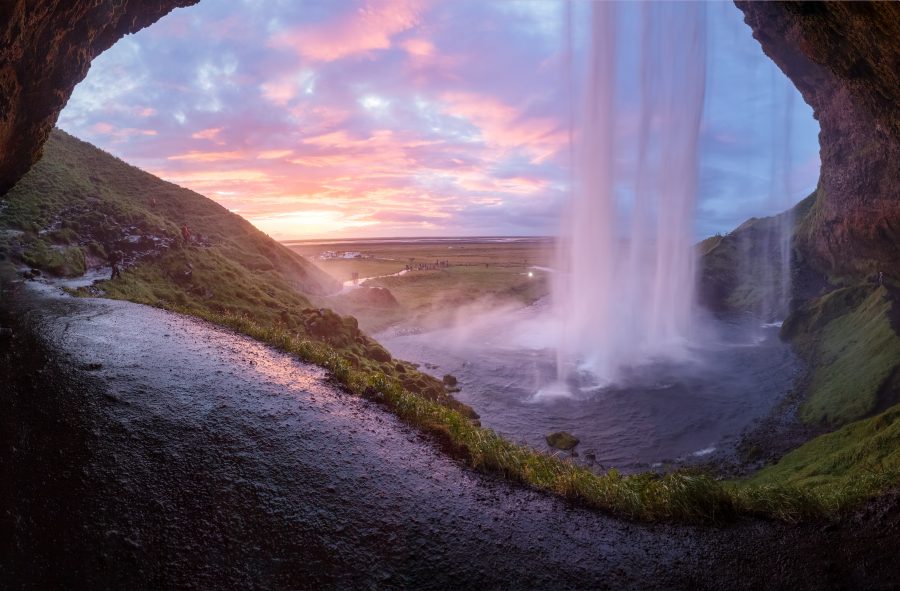
Learn how to use it
I can’t stress this point enough. If you don’t learn to master your camera, you’ll not be getting the best quality photos and video footage that you could be getting.
This means you’re also not getting your money’s worth. As mentioned when discussing the Canon EOS M100, it (and some other Canon cameras) features a Creative Assist mode, meaning that the camera itself can guide you to being a pro user.
If the camera you choose doesn’t feature a mode like this, the internet is flooded with tutorials, Q&As, and fantastic YouTube videos that can help you master your new gadget.
I always turn to YouTube to help me get to grips with my newest camera, since every single one operates differently, and I always find the tutorials on there to be lifesavers.
Read next: Photography basics: How to take amazing travel photos

Best editing programs
One last thing worth mentioning is that, even if your camera takes the highest of high-quality photos, those photos can be made to look even better with the right editing software.
Adobe Photoshop is by far the most famous of these, but it is absolutely not user-friendly and can be very daunting to master for beginners, so I can’t recommend it.
What I find much, much better, and easier is Lightroom – the Adobe sister program to Photoshop.
This editing program is user-friendly, provides additional plug-ins and pre-set settings for you to buy – to enhance your editing experience – and has the ability to upload finished edits immediately to social media.
It is an incredibly user-friendly and beginner-friendly piece of editing software and I highly recommend it.

